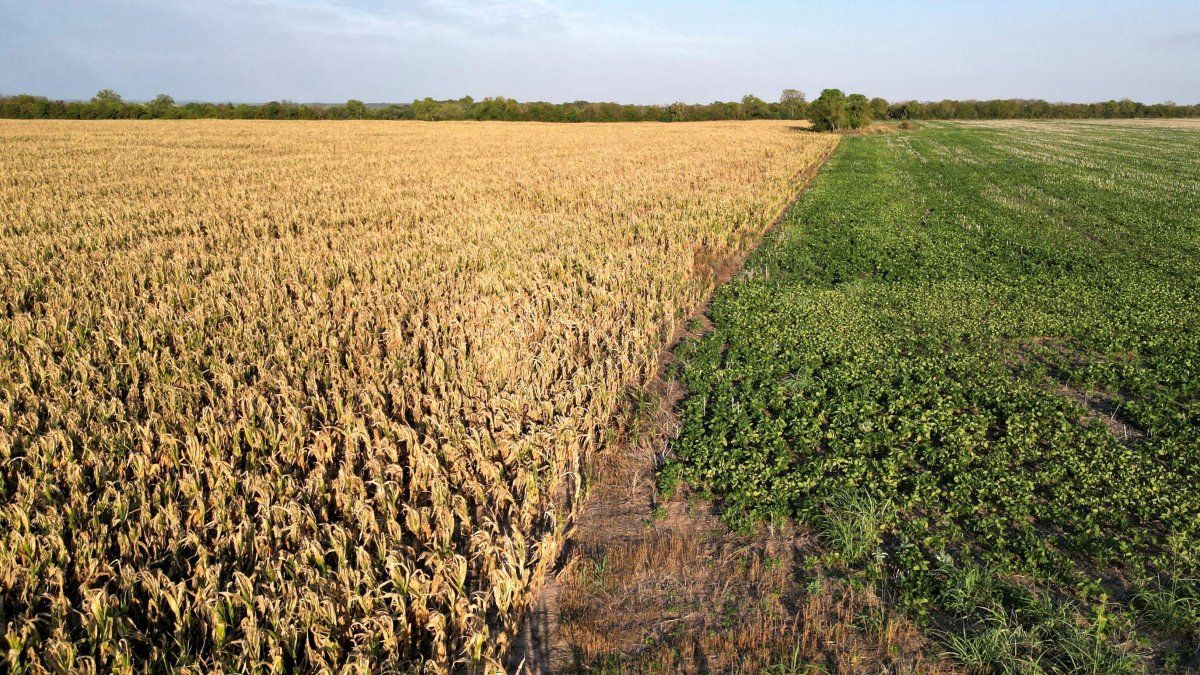The quality of the Soybean seeds for the 2024/25 campaign is at the heart of the agricultural debate. With sowing just around the corner, producers are faced with an alarming situation: low germination power and a high load of fungal pathogens that compromise germination and crop yield. This problem, which has not been observed with such intensity in more than two decades, generates uncertainty throughout the sector.
Faced with a corn campaign that will fall in planting intention, many producers they will look to play a safe card. This is where other crops appear, such as sorghum or, to a greater extent, soybeans, which require less investment in planting. In this sense, Joaquin Boscoa technician from Agropecuaria Eco Rural, confirmed to Ámbito that “this is going to be a year of growth in the soybean area, which means that there is not only a problem of lack of seed in the hands of the producer, but also in the hands of the multipliers, who have had less supply than usual.”
One thing is certain: There will not be much seed And since it is not normal for producers to analyse the bags early, they do it now and see that they have no seeds, which means that the sector assumes that there will be a bottleneck in demand and there will probably not be enough seeds for everyone, at least not one of good quality.
A complex outlook for producers
The germinative power of seeds soy fell to critical levels and the plots do not meet the minimum quality parameters required to guarantee successful planting. According to Bosco, “last season was very complicated due to the heat wave in the summer and the storms during the harvest, which created a problem that, in part, can be solved. Seeds affected by the storm must necessarily be treated with specific fungicides, since this greatly improves quality. As for the heat wave, it is something that has no solution, which is why much of the seed harvested this year had to be discarded. The rest must be treated professionally. This is where extra value is generated in the provision of seeds, not only because it ensures availability, but also because it ensures quality.”
Juan Catracchiahead of seed treatment products at Rizobacter, recommended doing an analysis of the seed and determining its germination power, cured and uncured. Uncured seeds have 40% germination power and when we treat them with a fungicide it goes up to 70, 80, 90%, that difference is enormous.
“We are seeing many responses to seed therapeutics. We have two challenges: to reduce the pathogen load but then we also have to protect it from the pathogens that are in the soil, so we have to see the whole picture. I really like the mixture that contains metalaxilene, fluidxonil and thiabendazole, let’s say, they are three different chemical families, very complete, and there we would have quite broad coverage. The good news is that there is a response to treatment, that is very important.”.
Agronomic strategies in focus
With such low germination power, many seed companies are re-evaluating their marketing and production strategies, while producers They fear a further loss of profitability. Agricultural engineer Juan José Durán, quality manager of Stine Semillas of Argentina, traveled in recent days to northern Brazil precisely to evaluate the quality of the soybean crop in contrast.
Regarding the situation in our country, Duran explained to the field that they received samples from many batches of producers in which they found 30% of seeds with good germination, another 30% with acceptable or recoverable germination and 40% with seeds to discard. “We do not have an explanation, because we would have one if we did a pathological analysis of all the samples and based on that put together a strategy to combat them with fungicides to improve quality. What we did see, both in May and June, in the first tests, as well as in the current tests, is that The seed that is cured increases the germination power. In some cases, seed that has 15-30% germination power of normal seedlings, perhaps, not in all cases, but it reaches 70-80% germination power. This is not always the case, so we must be very careful when making recommendations.”
The enemies of the next campaign
The presence of fungal pathogens in soybean seeds set off all the alarms. The high incidence of fungi such as Phomopsis, Fusarium and Cercospora This has not been observed in such proportions for more than 20 years. These pathogens not only reduce the germination capacity of seeds, but also increase the risk of disease during the production cycle, causing yield losses and affecting the health of the grain in general.
According to Duran, seed quality can be improved, but it is important to know if the seed has damage to the tegument, physiological damage, environmental damage or mechanical damage. The expert told Ámbito that “no matter how much you cure it, in some cases, the germination power will increase, but not the vigor of the seed. Therefore, you have to be very careful, take care of the seedbed, sow with humidity, sow at the indicated depth and at the indicated time. This is also going to be key, to accompany the seed quality a bit with agronomy.”
“What I would tell producers is to try, to evaluate products, to analyze the seed in official laboratories, not just anywhere, but in a seed laboratory, if possible, to do a topographic tetrasolium analysis to see which part is damaged and if they can also do pathology analysis. They are going to spend $100,000 or 200,000 pesos, but they are going to lose much more if they want to plant 200 or 300 hectares.”
Treating seeds with fungicides and other phytosanitary products is a practice that, although necessary, does not fully guarantee the recovery of germination power. It is crucial that producers prepare to make adjustments in sowing density and opt for better quality plots, if they can get them.
Source: Ambito
I am a 24-year-old writer and journalist who has been working in the news industry for the past two years. I write primarily about market news, so if you’re looking for insights into what’s going on in the stock market or economic indicators, you’ve come to the right place. I also dabble in writing articles on lifestyle trends and pop culture news.




